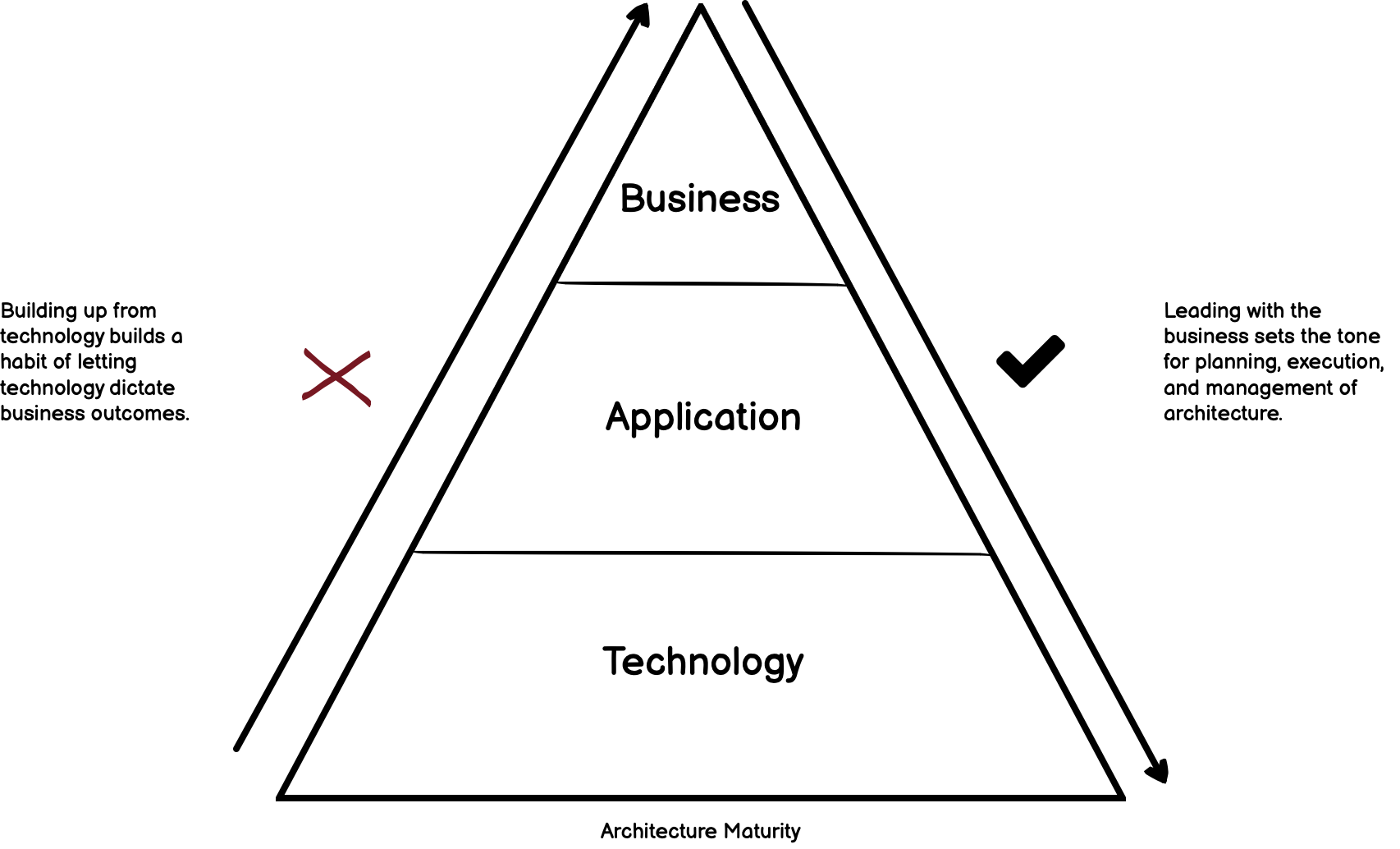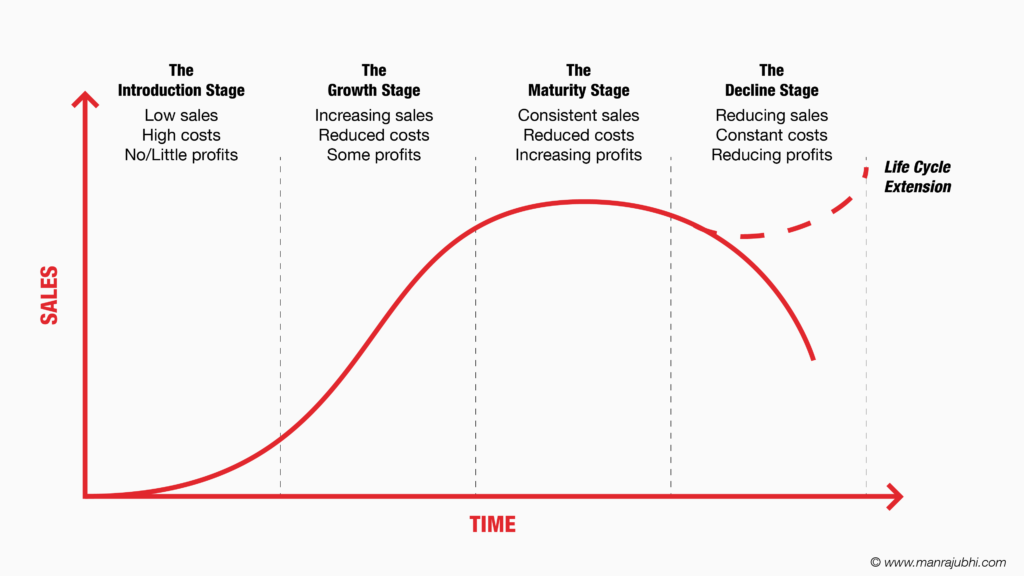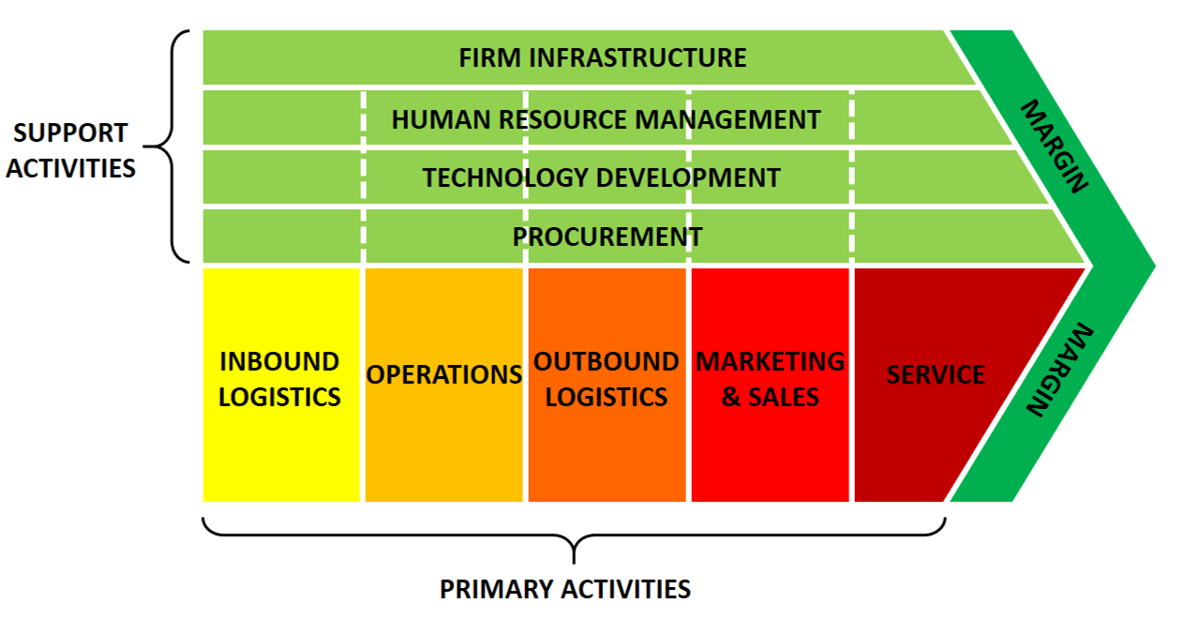All healthy technology discussions should begin with business goals and use those goals as a reasonable set of guidelines to focus technology investment decisions. These business goals are best articulated from a deep understanding of what the company, the product team, or the marketing team want to accomplish.
In a business-first model, technology is forced to balance the desires for technical effectiveness and efficiency with the operational needs of the business. This balance can be difficult to achieve if you’ve ended up in a leadership position from a technology background — you are used to solving problems by writing code and it becomes difficult to think of other ways to solve them!
In this post, I present two techniques to further your understanding of business needs and how technology relates to them: the business life cycle and the value chain. Learning even a little about these techniques can help you connect technology to meaningful outcomes for your company or organization.

Technique 1: Connecting Technology to Business Life Cycle
All companies, like all living creatures, have a life cycle. They’re created, they grow, they enter maturity, they decline, and eventually they reach the end of life. Every company that exists today is at some point within this life cycle and yours is no exception. As a technology leader, it is important for you to understand what stage your company currently is in, how long it has been in that stage, and how long it is likely to stay there before moving to the next stage, so that you can make appropriate technology decisions that support the company.
The following figure from Manraj Ubhi breaks down the life cycle of a company into five stages: launch, growth, maturity, and decline. The characteristics of a company change over time as it progress through these stages, and your approach to technology should match those characteristics. As an example, you don’t want to be pursuing a technical strategy that focuses on standardization and cost efficiency when the most important need of the business is agility and innovation.

Phase One: Introduction
Each company begins as a business by launching new products or services. Although this is a very exciting time, it is also where most business fail. At this point, you won’t have many defined processes around technology or operations, and you may not have a consistent viewpoint about technology yet. Each engineer is wearing many hats and there are few defined job descriptions as you develop a corporate structure.
Because revenue is so low during this phase and initial startup costs can be high, businesses are prone to incur losses in this phase — the cash flow during the launch phase is typically negative and dips lower than profit due to the initial startup costs.
What to do as a technology leader
At this stage in the life cycle, you are responsible for keeping the technology organization flexible so that the business has enough time to figure out a business model that allows for sustainable cash flow, consistent growth, and the ability to begin hiring additional people over time.
Phase Two: Growth
If a business survives the launch phase, they must have achieved significant enough product-market fit for their product or service to warrant increased sales and revenue. This increase pushes the company into the growth phase. In this phase, the company begins to solidify its position and stance in the marketplace and focus turns more inward into how the company itself scales to address the increased demand. This inward focus allows you to hire additional people with more defined roles, and to build up an effective team around those roles and business needs.
In the growth phase, companies experience rapid sales growth. As sales increase rapidly, businesses start seeing profit once they pass the break-even point. In reaching this phase, the business has demonstrated that it is a workable business entity with a workable business model. It has enough customers and satisfies them enough with its products or services to keep them.
What to do as a technology leader
The key problem for the business shifts from finding a product that people will buy or consume to a more acute understanding of the relationship between revenues and expenses. As a technology leader at this phase of the company life cycle, you are responsible for scaling the technology foundation your product or service depends on in the most cost-effective way possible so that revenue and expenses can break even before entering into profitability.
Phase Three: Maturity
During the maturity phase, sales continue to increase, but at a slower rate, usually due to the company either approaching market saturation and not having new customers readily available, or because of the entry of new competitors in the market that have seen your success and wish to emulate it. During this phase, new sales begin to peak and profits may begin to decrease. As the business enters full maturity, sales may even begin to slowly decrease and profit margins might get thinner and thinner as competition with other companies grows more fierce.
Mature businesses are dependable and consistent. Many mature businesses have a strong cash position and grow through acquisition or spin-offs of other product lines. Mature businesses can defend their market position and expand into new territories using their brand recognition and strong cash position. Operations are relatively smooth and people don’t feel burned out. Revenue is steady and predictable.
What to do as a technology leader
As a technology leader at this phase of the business life cycle, your focus should be on reducing costs and driving overall technical efficiency. This allows the company to extract the most profit from their industry.
Phase Four: Decline
Companies do not have to decline, though of course most do eventually. Some businesses can extend their mature life cycle almost indefinitely by reinventing themselves by investing in new technologies and emerging markets. This allows for companies to reposition themselves in their industries, and refresh their growth in the marketplace. For those companies that do decline, in the final stage of the business life cycle, sales, profit, and cash flow all decrease.
If revenue has declined for three consecutive quarters, you probably entered the declining phase two or so years ago. It is time for the organization to decide whether they need to cash out by selling the company to recoup there investment, or to reinvest in alternative means of growth.
What to do as a technology leader
If owners are focused on what they can take out of the business before they retire and aren’t willing to invest in new technology, people or marketing, it’s a sign that they are in decline and you may want to start looking for new opportunities. Alternatively, if business leaders have chosen to re-invest in the business, it is time to take action as a technology leader and start looking for ways to innovate while still “keeping the lights on” by running essential technology for the mature parts of the business that are still contributing to revenue.
It is important to understand the life cycle of your company because there are different values associated with companies at different points in their life cycle. These values map directly to the willingness of the organization to invest in innovation versus investing in maintenance or stability. Typically, early in a companies life cycle is the right time to chase innovation when you are trying to create a new product and market. As a company matures it is usually more cautious and considered as it aims to protect the market that it has been successful in and extract as much profit from that market through overall efficiency. Knowing the stage you’re in gives you a sense of what is important to the business and some guidance on what your technology and architecture strategy should focus on.
Thankfully, determining your company’s current life cycle stage is relatively easy. If you’re in a public company, you can read your companies 10-K or other financial data to get a sense of the relative maturity of the organization. This report details the financial performance of the company and the outlook for future earnings. If your company is not public, you may be able to access quarterly earnings reports from the finance team by asking. These documents will include a measure of business growth and will give you a good idea of the life cycle phase your company might be in. If your business is growing between 10 and 20% (or more) annually, you are likely in growth phase. As your business reaches market saturation your growth may slow to about 5% annually. If growth reaches between 0 and 5% or it has been declining year over year, you may be in the decline phase. It is important to correlate these figures between years to get a sense not only of the current growth rate, but the relative change in growth over time.
Technique 2: Understanding the Value Chain
A second technique for understanding the core of your business and the relation of technology and architecture to that core is to familiarize yourself with how the company creates value. A popular model for value creation, originally formalized by Michael Porter, is the value chain. Porter’s value chain model separates a company into activities that create value and activities that support value creation. As a leader within the organization, it is your responsibility to be clear on what activities your company does to create value and how you can support those activities. This may seem obvious, but it is surprising how often this step is overlooked as we get swamped in day-to-day work.
In Porter’s model, the value a company creates is divided into a series of activities or steps that fall into two categories: primary activities and support activities, as in the following figure.

Primary activities consist of five components, and all are essential for adding value and creating competitive advantage:
- Inbound logistics — receiving, warehousing, and managing inventory
- Operations — procedures for converting raw materials into a finished product
- Outbound logistics — distributing a final product to a consumer
- Marketing and sales — enhance visibility and target appropriate customers
- Service — customer service, maintenance, repair, refund, and exchange.
The role of support activities is to help make the primary activities more efficient. When you increase the efficiency of any of the four support activities, it benefits at least one of the five primary activities. These support activities are generally the activities that are viewed as overhead:
- Procurement — how a company obtains raw materials.
- Technology — information technology costs for managing and processes
- Human resources (HR) — hiring and retaining employees
- Infrastructure — company systems and their composition
As a technologist, it may be jarring to see “Technology” as a supporting activity, but in Porter’s model it refers to the supporting technical systems that are need to run the business. Think human resource systems, or backend payroll systems. Porter’s model can be applied to technology and software companies by treating “Operations” as the software development process responsible for creating the software and applications your company sells.
Porter’s value chain, serves as a structured way to begin discussions with business leaders about the relative value of technology to the organization. As you develop a stronger understanding of the value chain of the company, begin to ask questions about how you can make each stage in the chain more efficient or how you can extract more value from each stage of the chain by leveraging technology by identifying who the business owners or knowledgeable people are in each area of the business and interview them to understand how their area works and where it needs help. Now you can consider specific ways that technology can reduce costs, improve margins, or add to profitability for each of the points in the process and start to map technology recommendations to each.
The nature of technology is that there will always be problems to solve — some of them new, some of them routine maintenance, but all of them required. Focusing too much on solving only technology problems can cause problems for a technically minded leader if they lose sight of the goals of the business. When deadlines get tight and we are faced with the need to prioritize work, it is often easier to fall back to doing what we know and feel confident doing. Coming from a technical background, what we know and feel confident doing might be routine upgrades, research into new frameworks, or working with teams on deliverables. Unfortunately, this can prevent technically-oriented architecture groups from maturing into an organization that can support the needs of the business effectively. By focusing instead on the needs of the business and using these needs to guide your efforts, you will end up with a stronger voice within the company as you support the true needs of the organization.